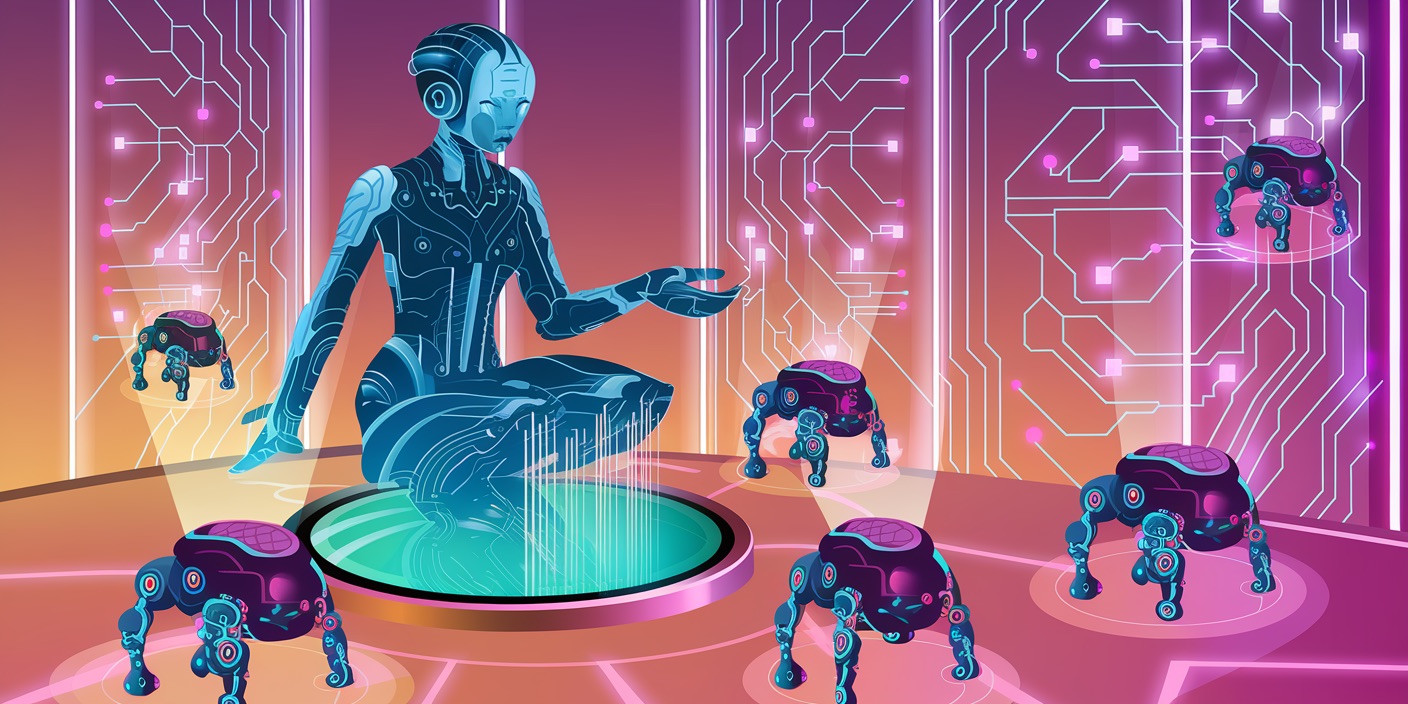The answer lies not in some single breakthrough, but in a constellation of advances that have transformed AI’s evolution into something more akin to an unstoppable feedback loop.
The Magic of Self-Improvement
At the heart of this shift is a process called knowledge distillation, a concept that sounds esoteric but boils down to this: large, powerful AI models act as teachers, generating training data for smaller, cheaper, yet remarkably capable “student” models. These students inherit and refine the teacher’s capabilities, then become the teachers themselves, perpetuating the cycle.
It’s a process researchers liken to a hive. The initial models are like queen bees, their sole purpose being to generate the foundational insights—structured data, reasoning patterns, problem-solving approaches—that will nourish the next generation. And with every generation, the models become faster, smarter, and more efficient.
This recursive process, where each model improves the next, has transformed the once-linear path of AI development into something exponential. The result is a system that doesn’t just get better—it gets better at getting better.
A Vertical Line on the Graph
AI benchmarks illustrate this acceleration in stark terms. Consider the ARC AGI benchmark, a measure of machine reasoning. Not long ago, AI models struggled to match human performance on this test. Today, they routinely outperform the human baseline. What’s more, models like OpenAI’s forthcoming o3 Mini promise to deliver greater intelligence at a fraction of the cost and size of their predecessors.
This isn’t just incremental progress—it’s a vertical line on the graph of technological capability. And it’s why industry insiders, including OpenAI’s Sam Altman, are openly revising their timelines for artificial general intelligence (AGI). What once seemed decades away may now be just years—or even months—on the horizon.
Why AI Is Moving Faster Than Expected
Several factors explain this rapid acceleration. First, improved training techniques, such as self-play and reinforcement learning, have allowed AI to hone its skills with minimal human intervention. Inspired by the success of systems like AlphaGo, which trained itself to play Go at a superhuman level by competing against itself, researchers are now applying similar methods to more general forms of reasoning.
Second, these systems are benefiting from unprecedented computational power. Vast data centers equipped with thousands of GPUs churn away, enabling models to train on massive datasets and refine their performance at an unprecedented scale.
Finally, there’s the phenomenon of recursive self-improvement. As AI becomes better at reasoning, it becomes better at improving itself. This feedback loop, long theorized by researchers, may now be operational. If so, it’s not just a breakthrough—it’s a revolution.
What Happens Next?
The implications of these developments are profound. For one, AI is on the cusp of automating its own research. Today, the creation of new AI models still requires teams of human scientists. But as models become capable of conducting research at or above the level of top experts, the pace of innovation could accelerate dramatically.
At the same time, the role of smaller, specialized models will grow. Just as the “teacher” models lay the groundwork for their successors, they also create tailored, domain-specific tools that can outperform general-purpose systems in specific tasks. These models—cheaper, faster, and easier to deploy—will transform industries from healthcare to logistics.
A Moment of Opportunity—and Risk
For all its promise, this new era of AI also raises urgent questions. The ability of AI to improve itself poses profound challenges for safety and governance. How do we ensure that these systems, once unleashed, remain aligned with human values? How do we prevent their misuse in a world where access to compute power is increasingly unequal?
These questions are not hypothetical. The U.S. government’s recent restrictions on the export of advanced chips to China reflect the growing geopolitical stakes of AI. Whoever controls the most advanced systems may also control the future of the technology.
Conclusion
We are witnessing what might be the most significant technological transformation in human history. Superintelligence—once the stuff of science fiction—is now a tangible possibility, driven by processes that were unimaginable just a decade ago. The next few years will determine not just the shape of AI’s future, but the future of humanity itself.
Inspired by: https://www.youtube.com/watch?v=Zy8tKHVSJfo
